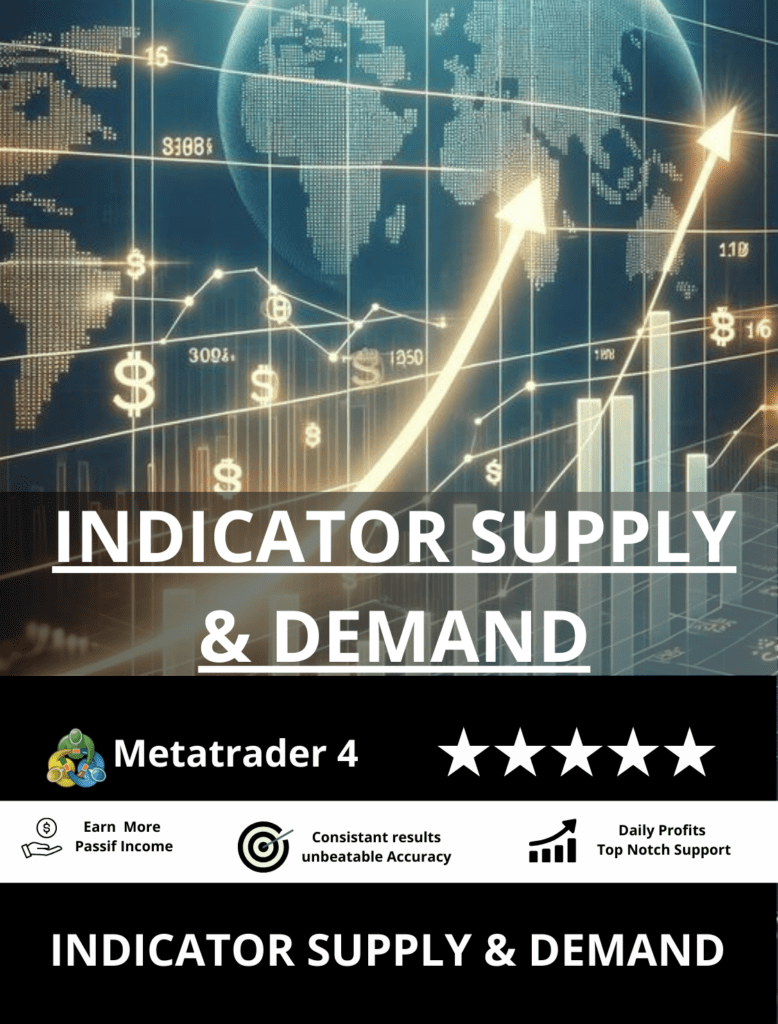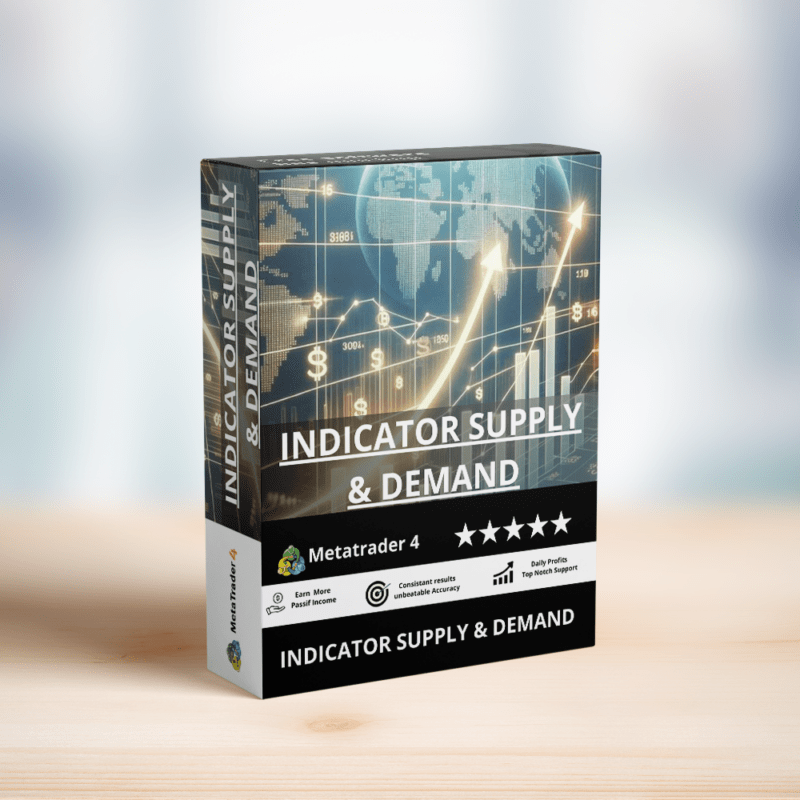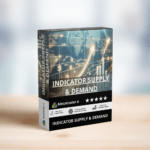Comprehensive Guide to Understanding Supply and Demand in Forex Trading
INDICATOR SUPPLY & DEMAND Supply and demand form the backbone of any market economy, including the Forex (foreign exchange) market. When leveraged correctly, they can provide powerful insights into potential market movements, giving traders an edge. This article delves into the fundamentals of supply and demand in Forex trading and explores strategies to enhance profitability using advanced technical indicators.
What Is Supply and Demand in Forex?
Supply and demand are fundamental economic principles that determine price fluctuations in any market. In the Forex market, supply refers to the availability of a currency, while demand indicates the willingness of buyers to acquire it. Prices shift as buyers and sellers engage, reflecting their perceptions of value based on macroeconomic factors, geopolitical events, and market sentiment.
How Supply and Demand Zones Form
Supply zones occur when an influx of sellers enters the market, causing the price of a currency pair to drop. Conversely, demand zones emerge when an increased number of buyers enter the market, pushing the price upward. These zones represent areas where price has previously reversed, indicating high potential for similar reversals in the future.
Identifying Key Supply and Demand Zones
To succeed in Forex trading, it is essential to identify key supply and demand zones accurately. These zones are not precise levels but rather areas where buying and selling pressures are strong. Traders often use advanced tools and technical indicators to spot these zones with precision.
Steps to Identify Supply and Demand Zones
- Look for strong price movements: Identify areas where price moves sharply in one direction, indicating a significant imbalance between supply and demand.
- Draw zone boundaries: Highlight the upper and lower limits of the price range where supply or demand was evident.
- Validate with volume: Confirm the zone’s significance by checking the trading volume at those levels. Higher volume typically indicates more substantial interest in the price action.

Supply and Demand Trading Strategy
Once the supply and demand zones are identified, they can be integrated into a trading strategy. The objective is to buy at demand zones where prices are expected to rise and sell at supply zones where prices are likely to drop.
1. Buying at Demand Zones
When the price reaches a demand zone, it signals a high probability that buyers will step in, reversing the trend. Traders look for confirmation signals, such as candlestick patterns (e.g., bullish engulfing) or technical indicators like the Relative Strength Index (RSI) showing oversold conditions.
2. Selling at Supply Zones
Supply zones represent areas where sellers dominate, causing prices to fall. Traders enter sell positions when the price reaches a supply zone, especially if additional signals, like bearish divergence in the Moving Average Convergence Divergence (MACD) indicator, support the trade.
Enhancing Your Strategy with Indicators
While basic supply and demand analysis provides a solid foundation, integrating advanced indicators can significantly improve trade accuracy. Some popular indicators to consider include:
1. Volume Profile
- The Volume Profile indicator helps traders assess where most trading activity occurs within a specific time frame, highlighting areas of high interest that often coincide with supply or demand zones.
2. Fibonacci Retracement
- Using Fibonacci retracement levels can assist in refining supply and demand zones. Traders use these levels to predict potential reversal points that align with existing zones.
3. Bollinger Bands
- Bollinger Bands allow traders to visualize volatility and price movements relative to supply and demand. When prices approach the upper band near a supply zone or the lower band near a demand zone, it may signal an impending reversal.
Managing Risk in Supply and Demand Trading
Effective risk management is essential to long-term success in Forex trading. Even with accurate zone identification, traders must protect their capital using stop-loss orders and position sizing.
1. Use of Stop-Loss Orders
Always place a stop-loss order slightly outside of the supply or demand zone to protect against unexpected market movements. This ensures that your losses are limited if the market moves against your position.
2. Position Sizing
Never risk more than a small percentage of your account on any single trade. Traders often use the 1-2% rule, ensuring that a single loss doesn’t significantly impact overall capital.
Common Mistakes in Supply and Demand Trading
1. Ignoring Market Context
Many traders fail to consider broader market trends when analyzing supply and demand zones. For example, during a strong bullish trend, demand zones may hold, but supply zones could be less effective as the overall momentum favors buyers.
2. Over-Leveraging
Using excessive leverage can amplify losses. Forex trading offers significant leverage options, but it’s crucial to manage it wisely. Over-leveraging positions can quickly lead to margin calls and substantial losses if the market moves unfavorably.
Conclusion
Mastering supply and demand in Forex trading is a powerful approach that can significantly improve trading outcomes. By carefully identifying and validating supply and demand zones, using advanced indicators, and managing risk effectively, traders can enhance their strategies and gain a competitive edge in the market. Keep refining your methods, and always stay informed about market conditions and economic events that influence currency movements.
Shopping Guide and Important Information:
Before making a purchase, please review and accept our terms and conditions and policies.
Contact Support:
For prompt assistance, reach out to us via Telegram using the following link: https://techlogiciels.com/contact/ You can also email us at: [email protected]
Refund Policy:
We do not guarantee profits or provide trading advice. Refunds will not be issued based on dissatisfaction with profits or any other reasons unrelated to technical errors. In case of a confirmed technical error, an alternative product will be provided. Please refer to our Refund Policy for more details. Customers initiating disputes/complaints with PayPal or Stripe will be blocked from future purchases across all our platforms and partners.
Demo Account Testing:
To mitigate risks and ensure success, we strongly advise testing the EA on a demo account before live trading. Profitability is not guaranteed, and success depends on effective risk management, emotional control, and a positive mindset.
Shipping and Delivery:
Upon purchase, the product download link will be promptly emailed to you. Please note that no physical products will be shipped to your address.









Reviews
There are no reviews yet.